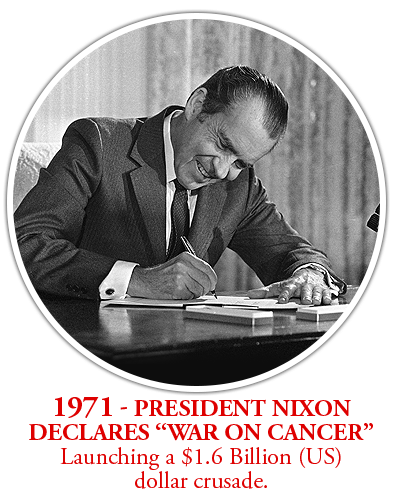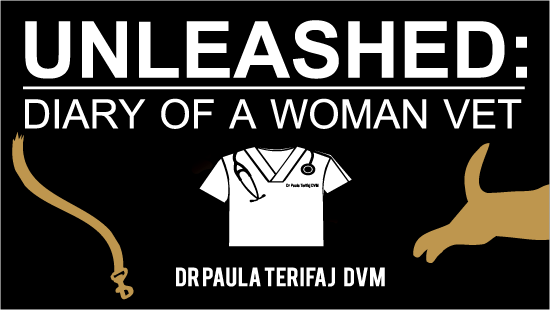For science to advance in making important discoveries, it must first humble itself to a troubled past – admit how our best minds got it wrong and praise the mavericks that persisted. Let me briefly borrow a day from 1971. On this day, December 23rd, President Nixon announced the signing of the National Cancer Act and declared America’s multi-billion dollar “War on Cancer.” Among the House and Senate representatives standing confidently beside the president was Senator Edward (Ted) Kennedy – all of them proudly beaming with smiles. At last we would battle this enigmatic enemy and win another victory for humanity. But that’s not exactly what happened.
Since the 1970’s War on Cancer declaration, more than four decades ago, countless courageous cancer patients have lost their battle. In 2009, despite the best neuro-oncologists and therapies money could buy, Senator Ted Kennedy lost his battle with brain cancer – suffering side effects of treatments that did little to extend his life. Kennedy had been a strong advocate for the National Cancer Act. The irony.
Nixon’s cancer war, like Reagan’s War on Drugs (1982), were doomed to fail. Why? They both suffered the same fatal flaw – the proverb “Know thy Enemy” reveals the gruesome truth. Both wars failed to understand the real enemy – thus missing their shot at bullseye targets. While Nixon’s cancer war chased genetic theories – such as spending 10 years to dissect the human genome, Regan’s war fought for mass incarceration. Bodies withered away in hospitals while minds rotted in prisons.
But not all has been lost on the cancer frontline. I’m here to tell you about the brilliant German scientist, Otto Warburg, who declared his own personal War on Cancer more than a century ago. It was 1924 when Warburg discovered something riveting about the enemy that killed his beloved mother.
Warburg’s experiment led to what has been called, the Warburg Effect. I first wrote about it in 2008{archive article}. My fellow biology junkies can find unlimited details surfing the Internet’s magnificent encyclopedia. The bare bones explanation – and all you really need to understand – is Energy! All the 37.2 trillion, or so, cells in the human body – from a muscle cell to a brain cell – must produce its own energy to carry out its specific functions and survive.
The mitochondria, a battery like organelle, is the powerhouse of every cell where food (glucose) is transformed into energy. Biology 101taught us basic principles about cell physiology. The mitochondrial machinery that produces our bodies fuel (ATP molecules) requires both glucose and oxygen (air you breathe). This metabolic pathway for energy production is known as aerobic (in the presence of oxygen) respiration (production of ATP). Recap: normal cells produce energy using aerobic respiration. As will be shown later, substantial damage to mitochondria powerplants taps off a Morse code SOS that can trigger a cellular meltdown. A normal cell goes rogue demonstrating a pattern of uncontrolled growth.
What did Warburg discover nearly one hundred years ago? He showed scientific proof that all cancer cells were producing energy without the benefit of oxygen. This curious finding led to the discovery of an alternative energy pathway called anaerobic (without oxygen) respiration. I will spare you the biochemistry lecture that illustrates the pathway of this chemical wizardry – instead I offer this scenario: Cells with damaged mitochondria sendoff signals alerting the nucleus of the cell to take emergency measures. In a haywire fight for its survival, the nucleus (storage site for genetic DNA codes) – issues a red alert that sets off a cascade of emergency switches. In that event, the generators are switched on to continue energy production without oxygen, called anaerobic (without oxygen) respiration. Also referred to as fermentation (energy that can be released from glucose when oxygen is not available).
Ancient microorganisms, like yeast and bacteria, play a role in the fermentation process, creating beer, wine, bread, kimchi, yogurt and other foods. Somewhere in our evolutionary past…mammals inherited and retained the switch for fermentation. The sneaky enemy reveals its first clue. Abnormal metabolism.
Sadly, the significance of Warburg’s discovery went on to collect dust – it would be decades before any scientist would dare to connect the dots.
Dots connected…






